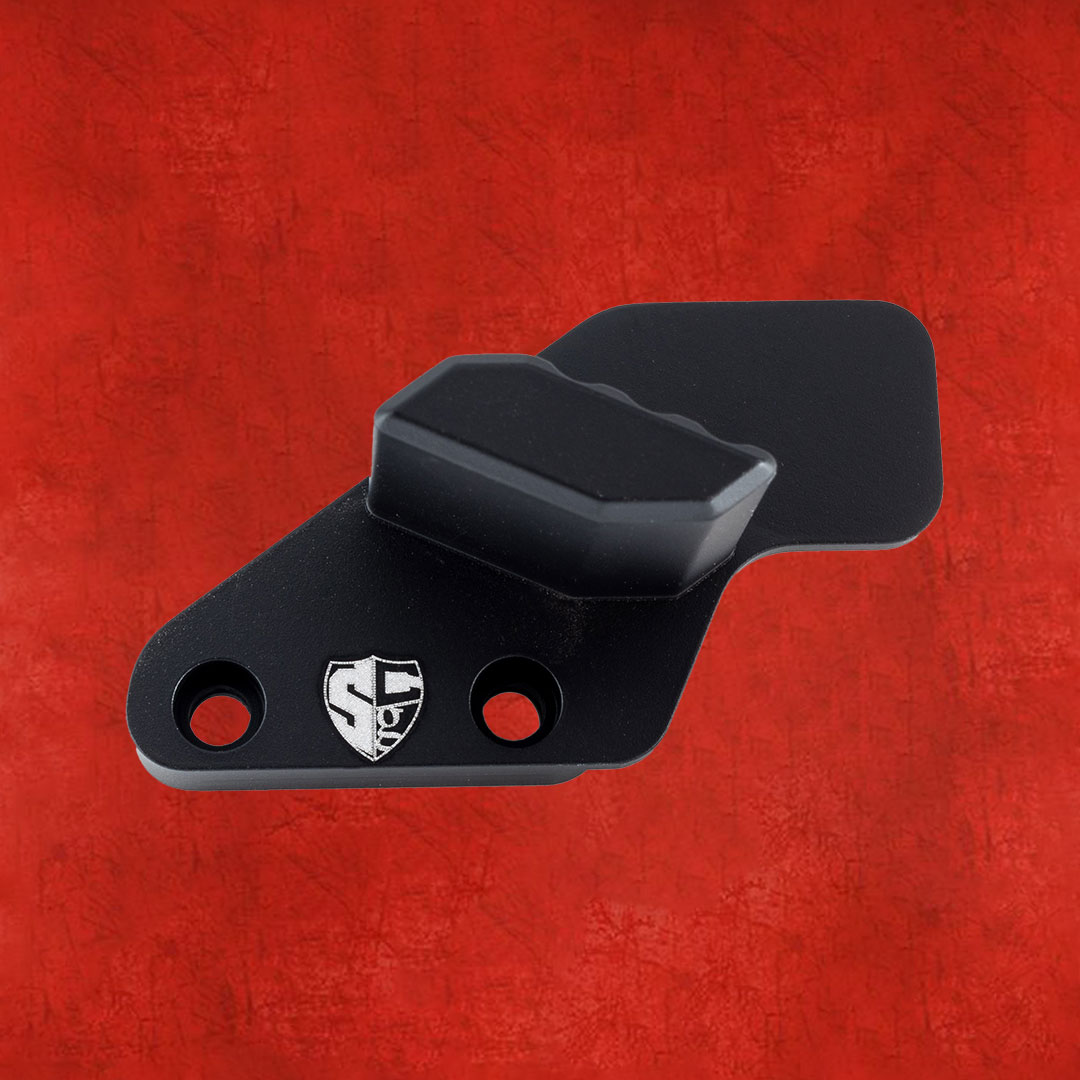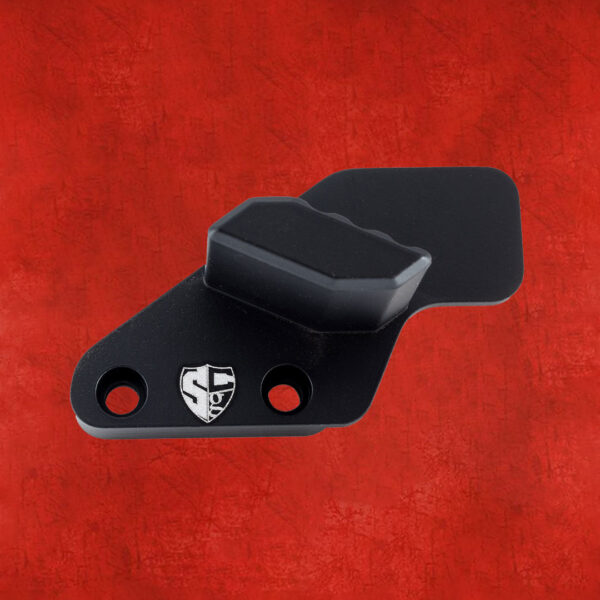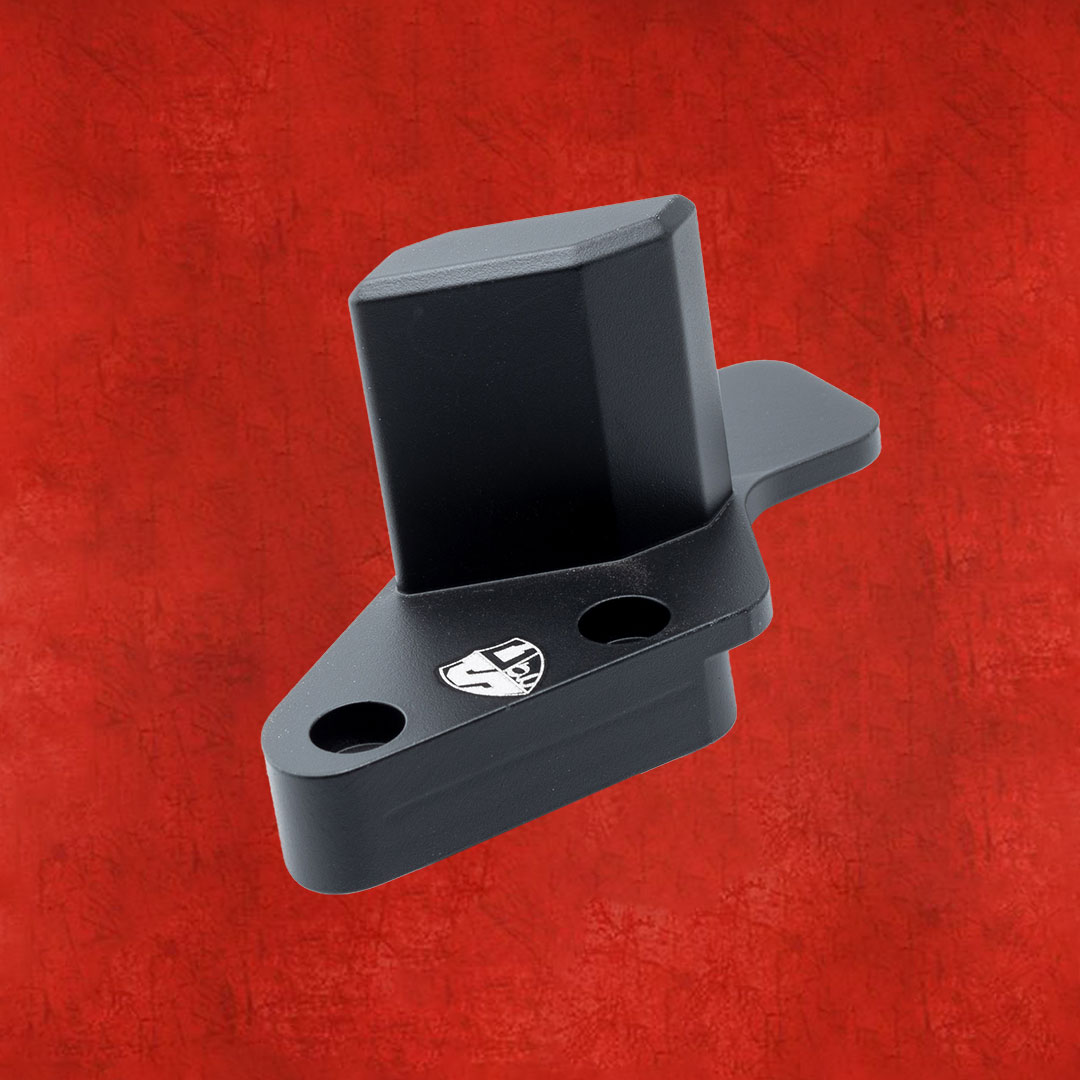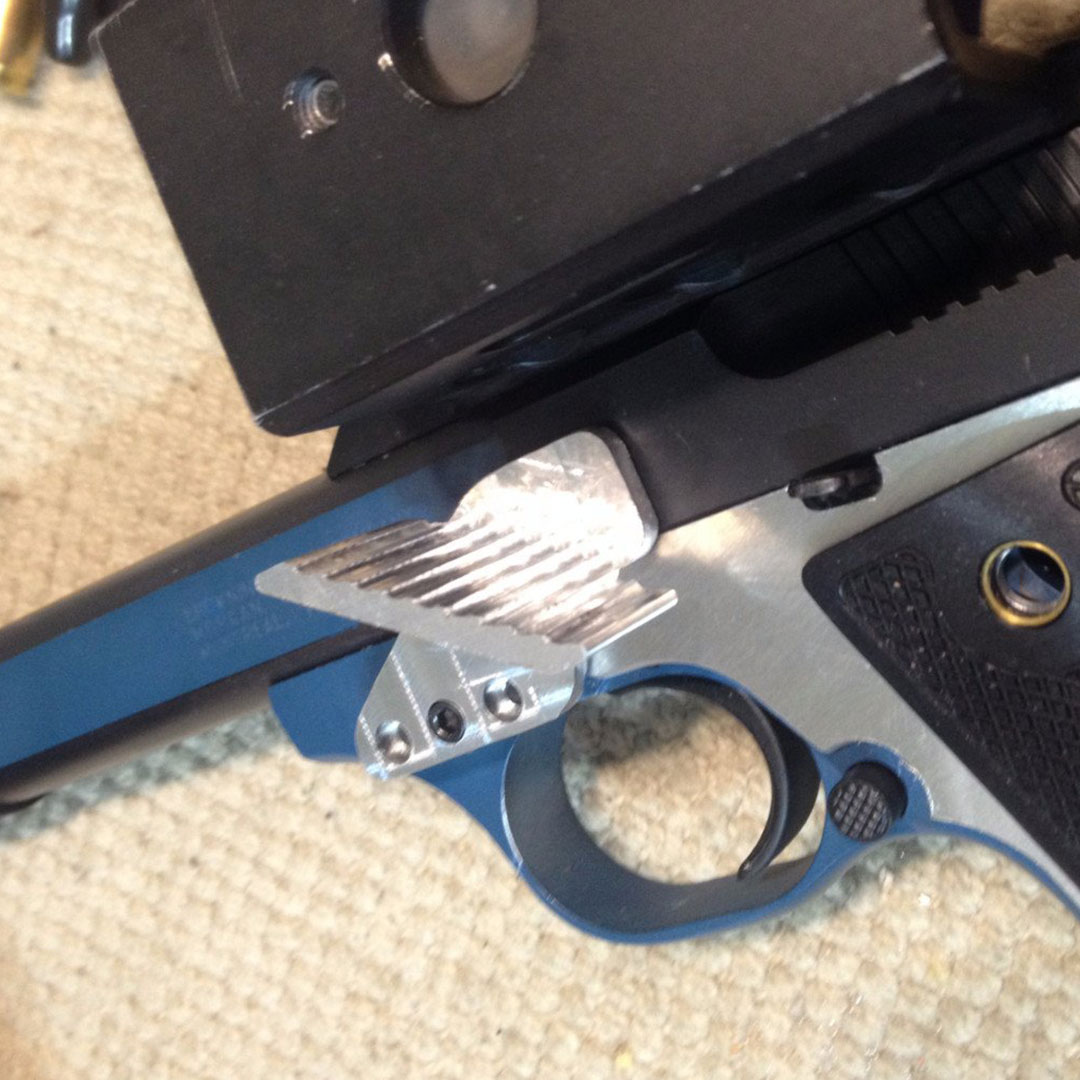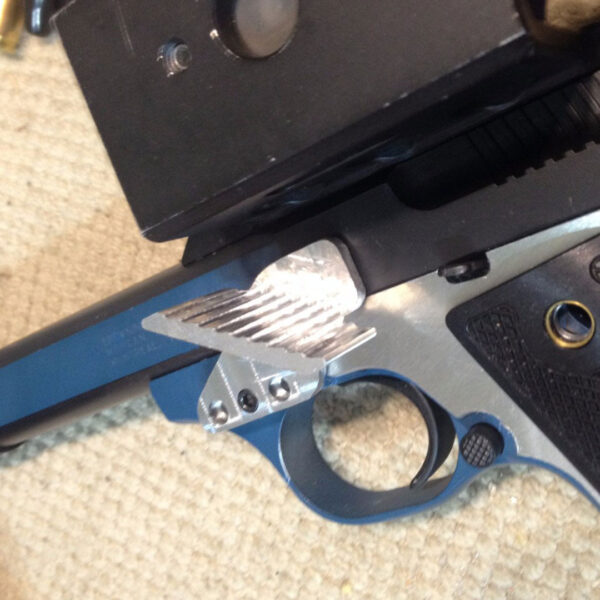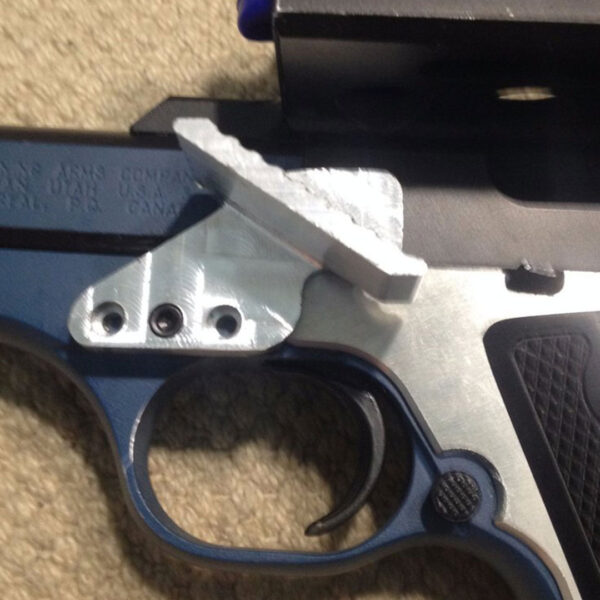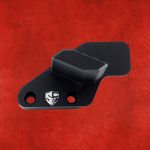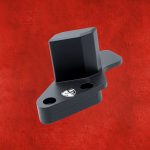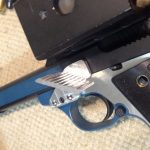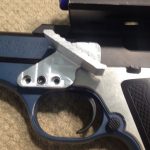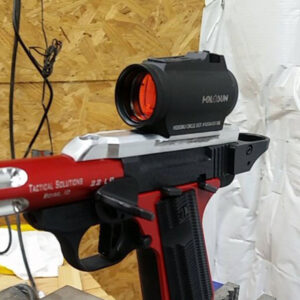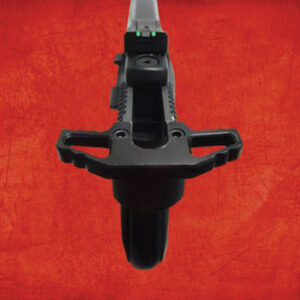Browning Buckmark Thumbrest
$59.00
Browning Buckmark Thumbrest
Browning Buckmark Thumbrest shown unpainted for visability is made from billet aluminum and cerakoted. It is designed to fit all models of Buckmarks and allows grip removal without having to remove thumbrest.
Description
Browning Buckmark Thumbrest
Browning Buckmark Thumbrest shown unpainted for visability is made from billet aluminum and cerakoted. It is designed to fit all models of Buckmarks and allows grip removal without having to remove thumbrest. Features a built-on guard to help prevent the thumb being pinched between slide and barrel. Thumbrests help control muzzle rise, increase grip strength, and promote consistent hand placement. Requires the frame to be drilled and tapped. Gunsmith installation is recommended. The grip adapters shown in the pictures are not included or required.
Browning Buckmark
John M. Browning developed the Model 1911 to fire the powerful 45 ACP cartridge. We developed it to fire the 22 L.R. and, after extensive testing and research, determined that 85% of the original size was ideal for the smaller cartridge. Put one in your hands and we know that you’ll agree. The grip is comfortable even in large hands and feels equally at home in smaller ones. The lightweight alloy construction is anything but light duty. Own a little piece of history today. And now with the addition of a polymer-framed version, you have more choices than ever.
Browning is one of those classic, traditional companies with a long, proud history.
To get to the very beginning one would have to go back to 1805, to the birth of Jonathan Browning in Tennessee. Jonathan was the father of John Moses Browning. Like many of his time he sought a life in the West, which eventually had him setting up shop as a gunmaker and gunsmith of some note in Nauvoo, Illinois and eventually brought him further West, with the Mormon pioneers to Ogden, Utah.
John Moses Browning was born in 1855 in Ogden, Utah, and spent a great deal of his growing up years at this father’s side in his father’s store and gun repair shop. In 1878, with encouragement of his father, he designed and began production on what he felt was a superior single shot rifle. He was right. And after a production run of about 600 rifles he was sought out by Winchester Repeating Arms and soon his ingenious falling block rifle became the 1885 Winchester. This began a string of legendary products he licensed to Winchester including the Model 1886, Model 1892, 1887 shotgun, Model 94 and Theodore Roosevelt’s favorite, the 1895. There were many, many more of his creations that became Winchesters.
By the turn of the century he was licensing his inventions to other gun makers and had already done his ground breaking work with fully automatic firearms and self-loading pistols – like the BAR, the M2 machine gun, the 1911 pistol . . . the list goes on — which are all now the stuff of legend.

